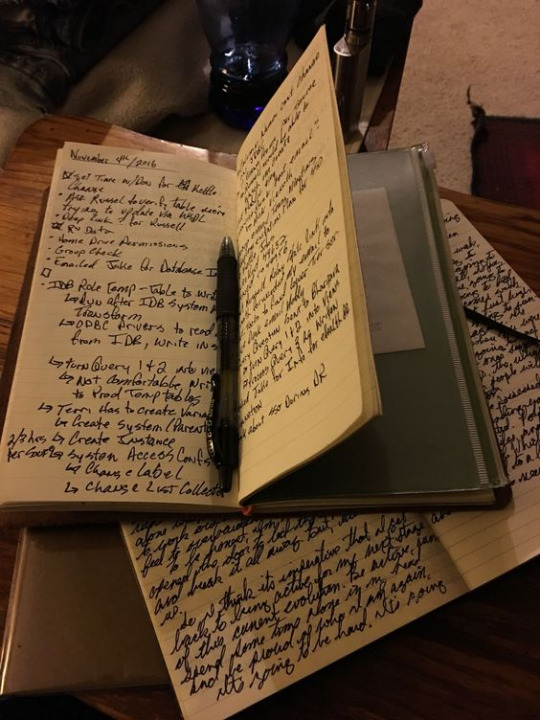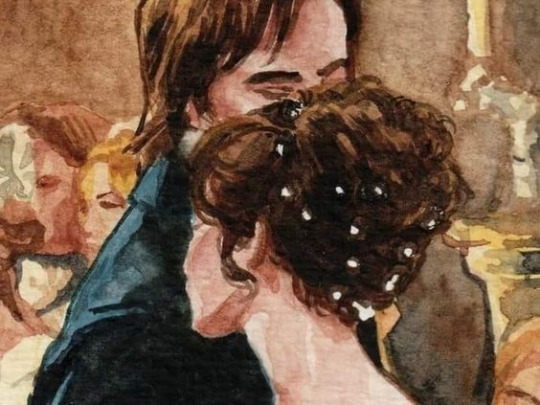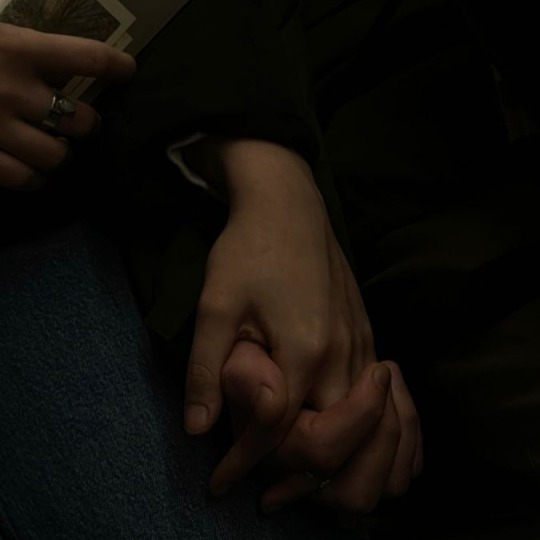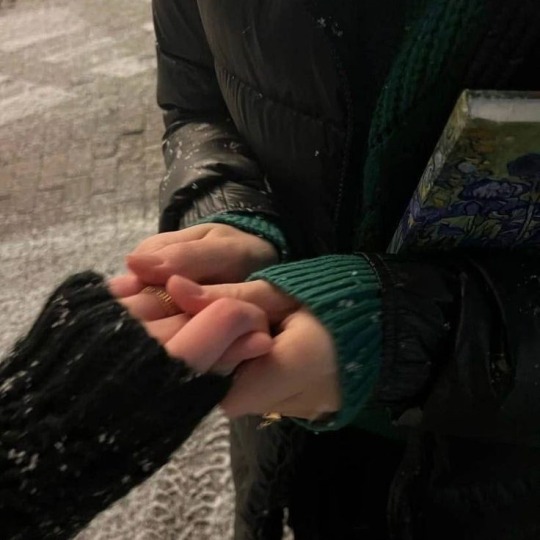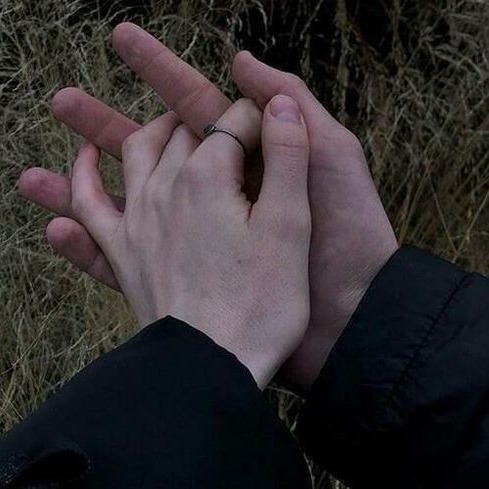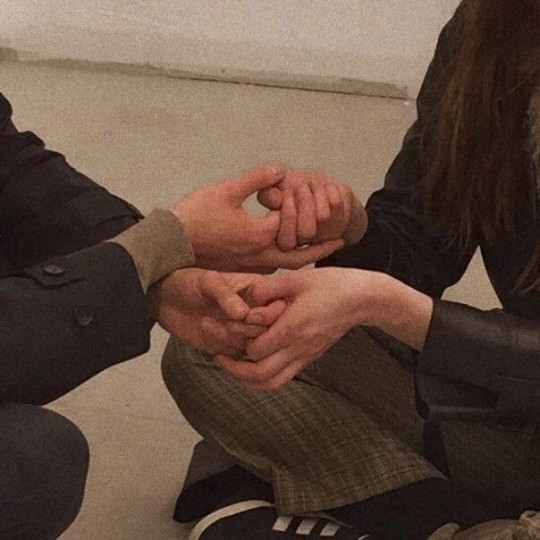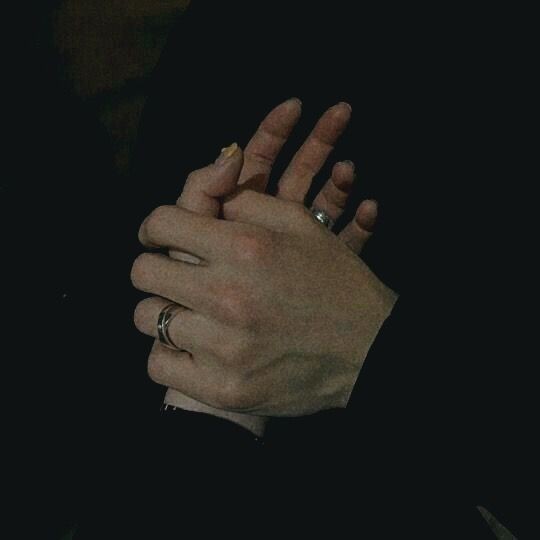Text
How to make your readers Feel emotions for Dummies
(Characters crying edition!)
So... You can't write characters crying? (Or you just want to read this for some reason) Well, neither do I so let's get right into it! I should be packing for a trip but oh well who cares? Not me!
Yeah. Your character is crying and you want to know...
How to not make it cringe af
How to make the Readers relate to it
How to make the readers not only relate to it, but feel DEPRESSED
Step 1 - Do NOT over describe it I've tried to write this so many times and failed that I've realized it's just like good horror. If anything, don't describe the tears, describe their impact, describe the horror of why they're happening, what they're doing to your character. (Example at the end)
Step 2 - Make it at a time when we've had time to connect to the character Put it in the middle of the 1st or only book at the earliest. Other than that, put it later. The more time you spend with the characters, the more their breaking down will emotionally scar you. And that's what we want
Step 3 - Describe other actions for the character Deep breaths, falling to their knees, screaming, choking, cradling the body of a loved one, sad dialogue, other concerned characters, ect. Actions speak louder than words and that is sooooo true in writing. This one of those rare cases where show don't tell is a must.
Ex. (I'm using A and B for the character names cause I'm lazy)
The world seemed to slow as everything came crashing down around her as his body hit the ground, a soft thud the only sound she heard as the grass slowly turned from the light lively emerald of life, to the deep crimson red of death. He was gone. She ran over to him, his quickly fading labored breaths and her crunching footsteps the only sound as the sun shone into her eyes, blinding her. She dropped to her knees beside him, the tears already beginning to fall as she began to choke on her own words, unable to speak as she grabbed his hand. It felt warm in her palm as she clutched his hand close to her chest as the world came crashing back. The burning light of the sun in her eyes, the heat of it and the adrenaline on her skin, her brother's cooling hand, his raspy breaths, her sobbing gasps, the clash of metal against metal, the falling bodies, the raining blood. Then the screams. "A! A! What are you doing?! We're in the middle of a fight! Don't you remember what I taught you?" B nearly screamed at her, causing A to cry out in a mix of anguish and agony, panic finally reaching her as the impact of what had just happened finally hit her.
(Side note: If you liked the example, it will be part of my Fantasy Book series Coming out soon! More in my profile if you're at all interested)
That wasn't as sad as it could of been because you didn't know the characters, but it's definitely better than just an extended description of crying.
Anyway, thank you lovelies and I hope this helps you even a little bit! Love you, continue being awesome!
2K notes
·
View notes
Text
10 outline techniques for writers
With this post I listed 10 outline techniques to help writes move their story from a basic idea to a complete set of arcs, plots, sequences and/or scenes. Or to simply expand whatever you have in hands right now.
If you have a vague story idea or a detailed one, this post is for you to both discover and organize. A few technique will work perfectly. A few won’t. Your mission is to find the one that works best for you. That said, I advice you to try out as many techniques as possible.
So, are you ready? Open your notebook, or your digital document, and let’s start.
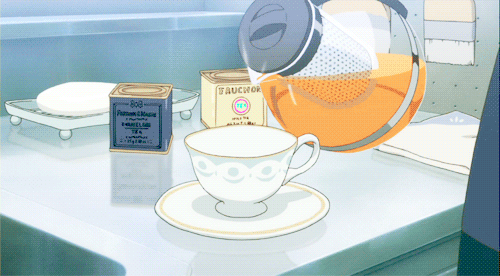
1. Snowflake method: Start with a one-sentence description of the novel. Then, develop this simple phrase into a paragraph. Your next step is to write a one-page summary based on the paragraph, you can write about characters, motivations, goals, plots, options, whatever you feel like. From this point on, you can either start your book or expand the one-page summary into four pages. And, at last, four pages into a brief description of known sequences of scenes. Your goal is to make the story more and more complex as you add information, much like a forming snowflake.

2. Chapter by chapter: List ten to twenty chapters, give each chapter a tittle and a brief description of what should happen. Then, break each chapter into three to five basic sequences of scenes. Give each sequence a title, a brief description and a short list of possibilities (possibilities of dialogues, scenarios, outcomes, moods, feelings… just play around with possibilities). From this point on, you can either create the scenes of sequences with a one-sentence description for each or jump straight to writing. Your goal is to shift from the big picture to a detail-oriented point of view.
3. Script: This might sound crazy, but, with this technique, you will write the screenplay of your story as if it’s a movie. No strings attached to creative writing, just plain actions and dialogues with basic information. Writing a script will take time, maybe months, but it will also enlighten your project like no other technique. Your goal is to create a cinematic view of your story. How to write a script here.
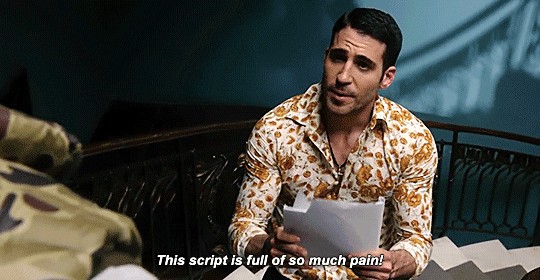
4. Free writing: No rules, no format, no step, just grab a pen or prepare your fingers to write down whatever idea that comes up. Think of possibilities, characters, places, quests, journeys, evolutions, symbolisms, fears, good moments, bad moments, clothing, appearances. Complete five to ten pages. Or even more. The more you write, the more you will unravel. You can even doodle, or paste images. Your mission is to explore freely.
5. Tag: This technique is ideal if you have just a vague idea of the story. Start by listing ten to fifteen tags related to the story. Under each tag, create possible plots. And, under each plot, create possible scenes. Grab a red felt pen and circle plots and scenes that sparkle your interest.
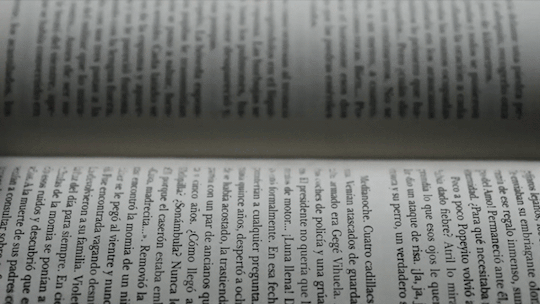
6. Eight-point arc: With this technique you will divide your story into eight stages. They are Stasis, Trigger, Quest, Surprise, Critical Choice, Climax, Reversal and Resolution. The Stasis is the every-day-life of your main character. Trigger is an event that will change the every-day-life of your character (for better or for worse). Quest is a period of your main characters trying to find a new balance, a new every-day-life (because we all love a good routine). Surprise will take your character away from their new found every-day-life. Critical Choice is a point of no return, a dilemma, your character will have to make the hardest decision out of two outcomes, both equally important. Climax is the critical choice put to practice. Reversal is the consequence of the climax, or how the characters evolved. Resolution is the return to a new (or old) every-day-life, a (maybe everlasting) balance.
7. Reverse: Write down a description of how your story ends, what happens to your characters and to those around them. Make it as detailed as possible. Then, move up to the climax, write a short scenario for the highest point of your story. From there, build all the way back to the beginning.
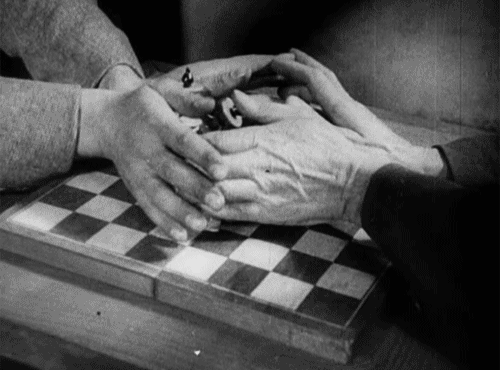
8. Zigzag: Draw a zigzag with as many up and downs as you want. Every up represents your main character moving closer to their goal. Every down represents your main character moving further from their goal. Fill in your zigzag with sequences that will take your character closer and farther from the goal.
9. Listing: The focus of this technique is exploring new ideas when your story feels empty, short or stagnated. You’ll, basically make lists. Make a long list of plot ideas. Make another list of places and settings. Make a list of elements. And a list of possible characters. Maybe a list of book titles. Or a list of interesting scenes. A list of bad things that could happen inside this universe. A list of good things. A list of symbolism. A list of visual inspiration. A list of absurd ideas you’ll probably never use. Then, gather all this material and circle the good items. Try to organize them into a timeline.
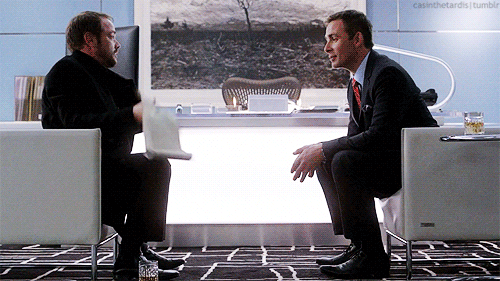
10. Character-driven: Create a character. Don’t worry about anything else. Just think of a character, their appearance and style. Give them a name. Give them a basic personality. Give them a backstory. Develop their personality based on the backstory. Now, give this character a story that mirrors their backstory (maybe a way to overcome the past, or to grow, or to revenge, or to restore). Based on your character’s personality, come up with a few scenes to drive their story from beginning to end. Now, do the same thing for the antagonist and secondary characters.
So, when is it time to stop outlining and start writing?
This is your call. Some writers need as many details as they can get, some need just an basic plot to use as a North. Just remember, an outline is not a strict format, you can and you will improvise along the way. The most important is being comfortable with your story, exploring new ideas, expanding old concepts and, maybe, changing your mind many times. There’s no right or wrong, just follow your intuition.
55K notes
·
View notes
Text
How To End Your Story
The Circle Ending: A story that does a full circle and comes back to the beginning
The Moral Ending: An ending where you learn a lesson and see the character develop
The Surprise Ending: A big plot twist last-minute
The Reflection Ending: The character looks back on their past achievements and experiences
The Emotional Ending: Leave your readers feelings sad, bittersweet, or happy
The Cliffhanger Ending: End on something that will leave your readers at the edge of their seat
The Humor Ending: Finish in a funny or humorous way
The Question Ending: Make the reader wonder what will happen next
The Image Ending: Show, don't tell
The Dialogue Ending: Finish with a quote from one of your characters
5K notes
·
View notes
Text
finding out there's a frankenstein ballet and that it was in october of last year…DEVASTATING

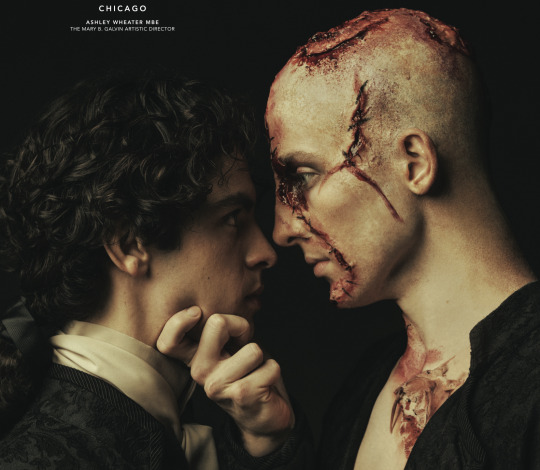
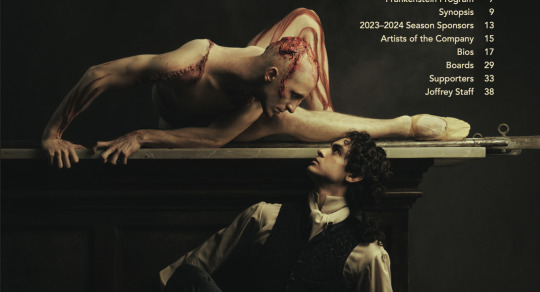
look at this. look at these. im foaming at the mouth
173K notes
·
View notes
Text
How to Nail your School Essays
Not to brag, but I’m kind of a big deal when it comes to essays at my school. Since I started highschool I haven’t received a grade less than 90% on an essay—so I’m here to share my secret. This works for the classic essay, but you can also use the same advice and fit it to formal reports or other academic writing.
1. Your essay is about 2 things, demonstrated 3 or more times
This is how I’ve always thought about essays. They’re about two ideas, demonstrated as many times as you need to fill the wordcount. Shakespeare + Feminism, Media + Truth versus Misconception, etc. etc. If you’re lucky, your teacher or prof will give you one of your elements. You’ll get assignments like, “write an essay about Hamlet” or “write an essay about the American dream” lucky you, that’s your first thing—now you need to connect it with another.
This connecting idea is my favourite part because you just get to choose a concept or idea you’re interested in. Here’s a tip, if your first/given topic is something concrete, choose an abstract connecting idea. If your given topic is something abstract, choose a concrete.
So, Hamlet (concrete) could be paired with any abstract concept: Loyalty, Truth, Feminism, etc.
However, if your prof gives you something like, “truth” or “race theory”, you’ll find it much easier to connect that with a more concrete thing, like a book, movie, or other piece of media, or even a specific person.
If you are luckiest, your prof will give you both things, “write about the American Dream in The Great Gatsby” in this case, you’re onto the next stage.
2. Stick to the formula
Tried, tested, true. Nothing wrong with a formula, especially not when it gives you A+ grades. Typical essay structure is:
Intro with thesis
2. 1st Body
2a. Evidence that proves it 1
2i. Justify its relevance
2b. Evidence that proves it 2
2ii. Justify its relevance
Etc.
3. 2nd Body
3a. Evidence that proves it
3i.Justification
Etc.
4. 3rd Body
4a. Rise and repeat, you know where this is going.
5. Some may argue…
6. Conclusion
Let’s break it down.
Thesis:
Thesis completely outlines all your points, or the three+ places you’re demonstrating your connection, and why it matters.
Here is an intro + thesis I wrote a couple years ago:
“This literature review will explore the impacts influencer marketing has on the children that regularly consume social media content. Specifically, this review will focus on how influencers can impact children’s brand preferences, dietary choices, and lastly, the influx of children taking advantage of this system and becoming influencers themselves.”
Or
“Burned discusses the human aspect of sex work and reverses reader’s expectations on sex workers, while Not in My Neighbourhood discusses prostitutes as victims of a system created against them. Both challenge readers’ perceptions of sex workers, effectively drawing attention to the ethics of displacing sex workers from their cities.”
So you have your connection (children and social media)/(Burned and Not in My Neighbourhood and sex work), and the different ways you plan on exploring or proving that idea (children’s brand preferences, dietary choices, children becoming influencers.) etc.
You may also have a more specific stance in your thesis. Such as, “In Macbeth, ambition is shown to be Macbeth’s ultimate downfall in these three ways.”
The Body Paragraphs
You start out every body paragraph with the point of the paragraph, or what it’s aiming to prove. Such as, “Influencers often include advertisements within their content, which can encourage children to feel more amiably to certain brands their favourite content creators endorse frequently more than others.”
After this claim, you spend the rest of the paragraph further proving it through examples. This will look like citing a specific source (a book, academic journal, quote, etc.) such as, “The authors claim likeable influencers can associate their likeability with the products they use, influencing children’s perception of brands, referred to as ‘meaning transfer’ (De Veirman et al. 2019)” (super important to always cite these sources!)
The last part is after each example/proof--you need to justify why this proves your point/is important. So, “This proves children are more influenced towards certain products depending on how close of a relationship they perceive to have with the influencer.”
Typically, your evidence will all lead into each other so you can transition to the next piece of proof, then the justification, rinse and repeat until you’re finished your paragraph. You can have as many pieces of evidence as you want per paragraph, and the longer your word requirement, the more you’ll want to fit into each point (or the more bodies you want to have.)
Piece of evidence + why it matters, rinse and repeat.
Some May Argue:
This is a small paragraph just before your conclusion where you anticipate an argument your readers may have, and disprove it. So, for example, you’d start with, “Some may argue that with parent supervision, the impacts of influencers on children could be lessened or moot. However…” and then explain why they’re wrong. This strengthens your argument, and proves that you’ve really thought out your stance.
Conclusion:
Lastly, you want to sum up all the conclusions you came to in a few sentences. Your last line is one of the most important (in my opinion). I call it the mic drop moment. Leaving a lasting impact on your reader can bring your essay from an A to an A+, so you really want to nail this final sentence.
My final sentence was, “Ultimately, it is hard to know in advance how technology and social media will impact the development of children who have always grown up with some form of screen, but until they grow up, parents and caregivers need to take care in the content their children consume, and their very possible exploitation online.”
This sentence is backed by the entirety of the essay that came before it, and usually leaves a little something to chew on for the readers.
Any other tips I missed?
1K notes
·
View notes
Text
I have friends with whom I happily share the fanfics I wrote, and friends from whom I hide the fanfics I wrote. this doesn’t mean I don’t love or trust the friends who fell into the latter category, of course I still love them, it’s just that they’re normal and would be petrified if they ever read the shit I wrote. my hiding my ao3 from them is me protecting them
6K notes
·
View notes
Text
writers whenever they’re starting a new fic: I have these ✨ vibes ✨ now I’ll have to build an entire plot and write an entire fic about those vibes
32K notes
·
View notes
Text
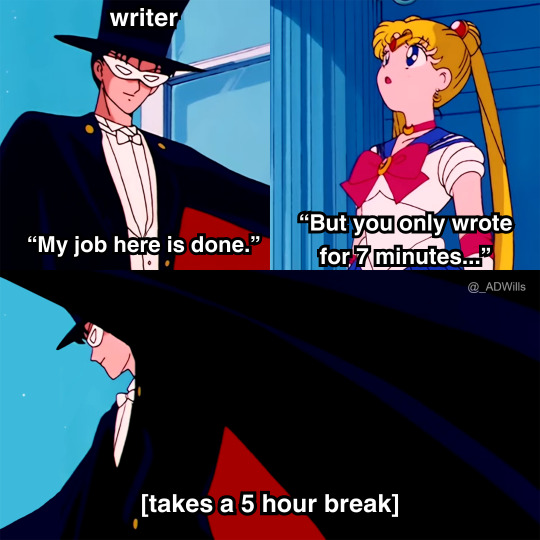
35K notes
·
View notes
Text
someone said "hozier doesn't write about love, he writes about devotion" and i haven't slept peacefully since
3K notes
·
View notes
Text
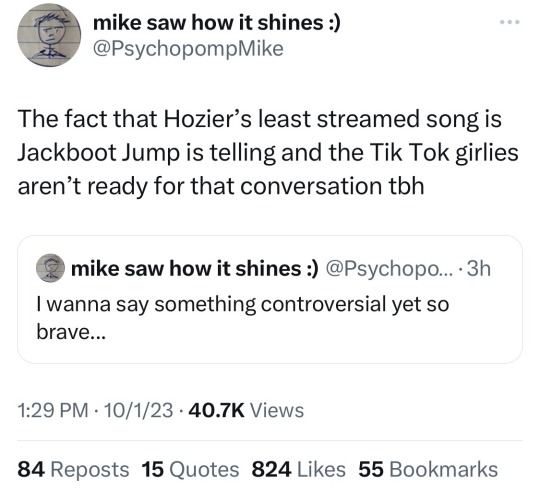
🙃 Regular reminder that while Hozier has amazing love songs, he is ALSO very outspoken about his leftist politics, specifically anti-fascism, anti-racism, reproductive rights, Palestinian rights and more.
Take Me To Church and Foreigner’s God are scathing critiques of organized religion, specifically the Catholic Church and the colonization of Ireland.
Moment’s Silence is about oral sex but it’s ALSO about how that specific sexual act is often distorted to a show of power rather than that of love.
Nina Cried Power is an homage to various (mostly Black) civil rights activists from the US and Ireland and a call to follow their path.
Be criticizes anti-migrant policies and Trump and his ilk.
Jackboot Jump is about the global wave of fascism and about protest and resistance.
Swan Upon Leda is about reproductive rights and the violent colonial oppression of Ireland and Palestine.
Eat Your Young is about the ruinous way the 1%/capitalism and arms dealers prioritize short-term profit over everything else to the detriment of the youth/99%
Butchered Tongue is about Irish and other indigenous languages being suppressed and erased by imperial powers.
If any of the above surprised you, please, please delve deeper into Hozier’s music, you’re missing such an important part of his work.
82K notes
·
View notes
Text
Practical Benefits of Creative Writing if You Need Some Motivation
Writing stories isn't just a hobby. It's a practice that sharpens so many skills. You'll use these skills all your life, so write that silly idea and let's start refining these talents that come from our work:
(Psst—this is where you should open that copy of your resume if you're also applying for jobs!)
Communication: You know how to use words to convey complex and simple ideas.
Emotional identification (for personal benefit, not so much standard careers): You'd be surprised how many people can't name or describe their emotions, much less make them something others can feel.
Thematic analyzation: You can find or create a common thread between wildly different people.
Community building: You can bring people together by making them feel things deeply.
Perspective shaping: You make others try on new perspectives through your characters and their challenge, which also points back to your communication skills.
Encouragement: You know how to make other people dream through your work.
Empathy: You remind readers they aren't alone in their experiences—we are all going through different versions of pain together.
Typing: Let's be real, every boss will think you're amazing if you can type with more than two fingers at a time (or with two fingers really fast!).
Time management: You're always finding ways to fit your writing into your schedule, even if it's only once a month.
Commitment: because that 100,000-word fanfic won't just appear on paper because you daydreamed about it.
Self-reliance: When you set a goal to write a story, you (mostly) finish it. All on your own!
A willingness to learn: Your editing and revising work keeps you open to growth opportunities, which is essential to being a good person/team member/employee.
Organization: Those folders with all your story ideas, character outlines, and plot arcs? That's a skill, my friend.
Creativity: You're in touch with your creative instincts, which brings vision to projects and team efforts that produce better results
1K notes
·
View notes
Text
“We need more complex female characters!”
None of you could even handle Helen of Sparta. And she’s been around for a long time, yet she’s still misunderstood.
1K notes
·
View notes
Text
“How’s your WIP going?”

"Have you made any progress?”

“How close are you to being done?”

74K notes
·
View notes





